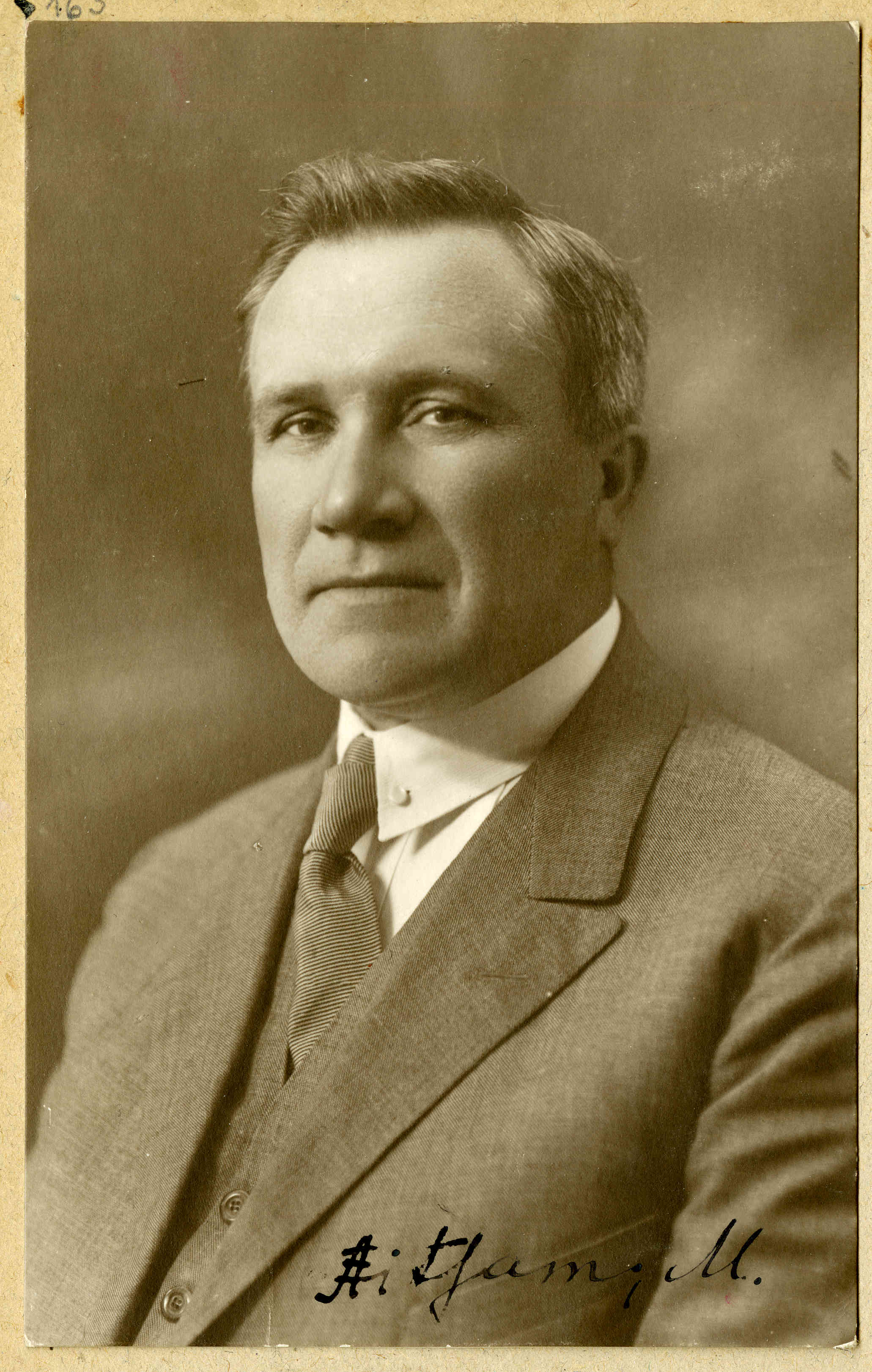
Mihkel Aitsam
Mihkel Aitsam (1 December / 19 November 1877 – 17 June 1953) was a prose writer, playwright, journalist and local historian.
Aitsam was born as the son of Aitsamaa farm renter at Sääla village in Vigala parish, Läänemaa County (nowadays in Rapla County). His father Mihkel Aitsam (1833–1913) was known as the man who sued the lord of the manor, baron Bernhard von Uexküll in Tallinn district court because of rent and won the case against him. From 1885–1893, Aitsam attended Velise parish school and continued his education as an autodidact. From 1894–1903, he sent folklore from Vigala to the pastor and folklore collector Jakob Hurt. From 1900, he was a contributor to Valgus, Teataja, Uudised and other newspapers for which he wrote news items, satires, short stories, and where he published translations. In 1905, he was imprisoned for five months for participating in revolutionary events at Vigala and in the congress of people’s deputies in the festive hall of the University of Tartu. In 1906, Russian punitive squads destroyed Aitsam’s father’s farm. Then he settled in Tallinn where Karl August Hermann invited him to work for the newspaper Hüüdja. He worked there until the closure of the newspaper in 1907.
From 1909–1920, Aitsam worked as manager of the Estonian Farmers Society in Tallinn; from 1919–1940, he worked for the newspaper Päevaleht and in 1940 for the newspaper Kommunist. Aitsam also contributed to two Russian newspapers of St Petersburg. After retirement in 1941 to his death, Aitsam lived at Vigala where he supervised singing groups and performed as a violin player.
In the newspaper Päevaleht, Aitsam published nine historical novels and stories based on archive materials and folk stories. All of them depict peasants’ struggle against feudal lords in North and West Estonia. Three of his novels were published as books, but they are little known because of their small print run and the revolutionary historical events following their publication. The protagonist of the novel Hiiu lossist – Siberisse (‘From Hiiu Palace to Siberia’, 1937) is Baron von Ungern-Sternberg, a legendary pirate in Hiiumaa Island. The novel Eestimaa kuningas (‘King of Estonia’, 1937) depicts serfs’ uprising led by Kõlli Toomas at Kose-Uuemõisa manor in 1805. The novel Hiislari tütar (‘Sacred Grove Warden’s Daughter’) creates an artistically convincing picture of people’s life and beliefs at Vigala in the 16th century. The three best-known of Aitsam’s four plays – Koerakasvatuse eriteadlane (‘Specialist in Dog Breeding’, 1923), autobiographical Salmisto (1925) and Maakuld (‘Country Gold’) were played by both professional and amateur theatres.
In 1937, Aitsam published the book 1905. aasta Läänemaal (‘Year 1905 in Läänemaa County’), which was based on his memories and research. His bulky historical studies Vigala kihelkonna ajalugu (‘History of Vigala Parish’) and 1905. aasta revolutsioon ja selle ohvrid Eestis (‘The Revolution of 1905 and Its Victims in Estonia’) were published in the 21st century. 1905. ja 1906. aasta Vigalas (‘Years 1905 and 1906 at Vigala’) remains in manuscript. During his lifetime, Aitsam published about a hundred shorter writings on history in the press.
In 1935, Mihkel Aitsam was awarded the Order of the Estonian Red Cross, Class 2, Rank 2. In 1937, he received the Order of the White Star, Class 4.
He was the father of photographer Mihkel Aitsam (1913–1999) and grandfather of journalist Viio Aitsam (born 1955).
L. P. (Translated by I. A.)
Books in Estonian
Novels
Hiiu lossist – Siberisse: ajalooline romaan legendaarseist Hiiu mereröövleist. Tallinn: Tallinna Eesti Kirjastus-Ühisus, 1937. 175 lk.
Eestimaa kuningas: sõda Kose-Uuemõisas. Ajalooline jutustus. Tallinn: Tallinna Eesti Kirjastus-Ühisus, 1938. 586 lk.
Hiislari tütar: ajalooline jutustus võõruskude sissetungist Eestisse. Tallinn: Tallinna Eesti Kirjastus-Ühisus, 1940. 509 lk.
Plays
Näituse büroos: 1-s vaatuses epiloogiga [näidend]. Tallinn, 192-?. 19 lk.
Koerakaswatuse eriteadlane: näituse jant 2 waatuses. Tallinn: M. Aitsam, 1923. 39 lk.
Salmisto: 1905. a. revolutsiooni päevilt: rahvatükk 4 vaatuses. Tallinn: Mutsu, 1925. 147 lk.
Maakuld: rahvatükk 4 vaatuses. Tallinn: Eesti Haridusliit, 1930. 120 lk.
History books
1905. aasta Läänemaal: eel- ja järellugudega. Isiklikke mälestusi ja uurimusi. Tallinn: Tallinna Eesti Kirjastus-Ühisus, 1937. 423 lk. [2. trükk: ’Jõulud Vigalas: 1905. a Läänemaal: eel- ja järellugudega. Isiklikke mälestusi ja uurimusi’, Tallinn: Hea Lugu, 2014, 445 lk.]
Vigala kihelkonna ajalugu. Kivi-Vigala: Vigala Vallavalitsus, 2006. 447 lk.
1905. aasta revolutsioon ja selle ohvrid Eestis. Tartu: Ilmamaa, 2011. 470 lk.



